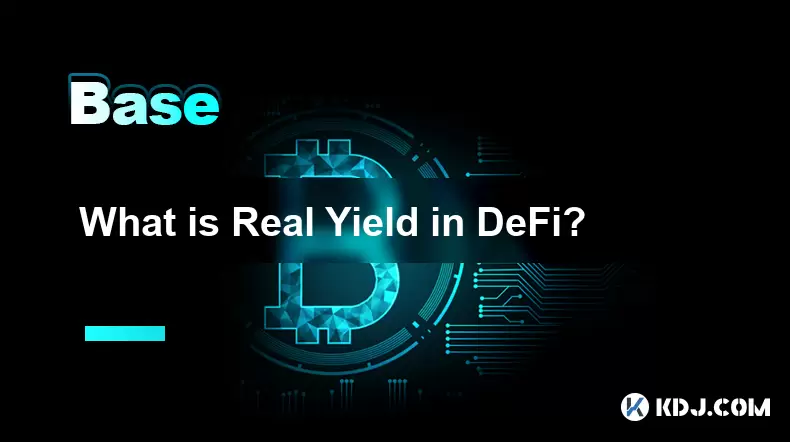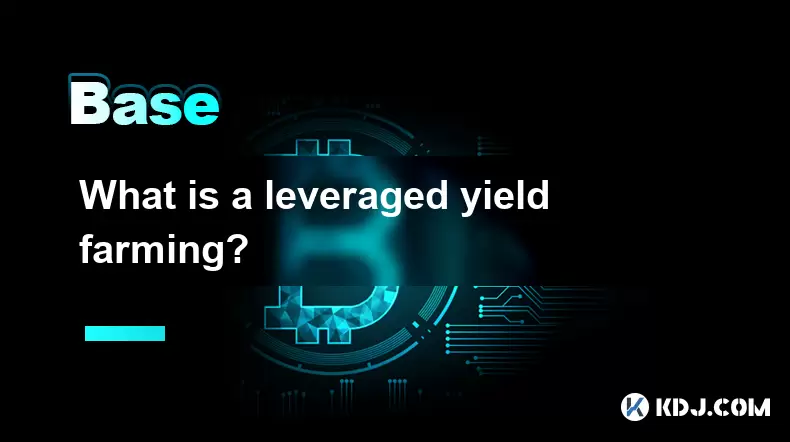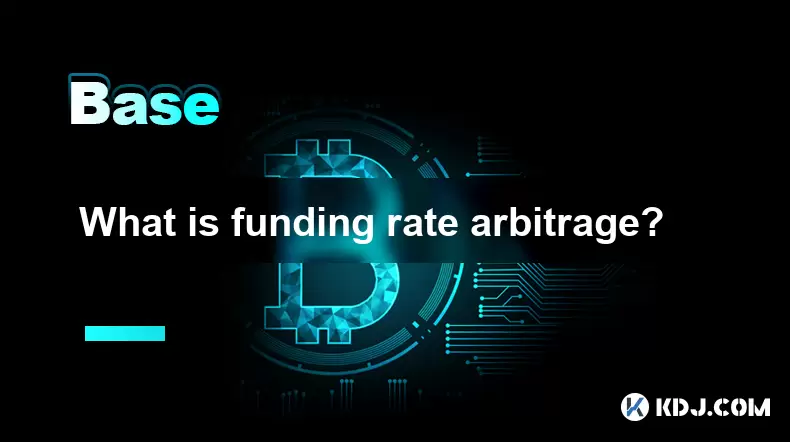-
 Bitcoin
Bitcoin $107,758.1435
-1.45% -
 Ethereum
Ethereum $2,490.6114
-3.32% -
 Tether USDt
Tether USDt $1.0004
0.00% -
 XRP
XRP $2.2042
-2.04% -
 BNB
BNB $651.4818
-1.12% -
 Solana
Solana $145.8782
-3.02% -
 USDC
USDC $0.9999
0.00% -
 TRON
TRON $0.2819
-1.39% -
 Dogecoin
Dogecoin $0.1621
-4.58% -
 Cardano
Cardano $0.5658
-4.18% -
 Hyperliquid
Hyperliquid $37.8181
-6.63% -
 Sui
Sui $2.8404
-4.91% -
 Bitcoin Cash
Bitcoin Cash $481.3703
-2.30% -
 Chainlink
Chainlink $13.0043
-4.79% -
 UNUS SED LEO
UNUS SED LEO $9.0464
0.26% -
 Avalanche
Avalanche $17.6115
-4.39% -
 Stellar
Stellar $0.2359
-2.11% -
 Toncoin
Toncoin $2.7507
-3.93% -
 Shiba Inu
Shiba Inu $0.0...01126
-4.41% -
 Litecoin
Litecoin $86.1256
-3.27% -
 Hedera
Hedera $0.1530
-3.13% -
 Monero
Monero $312.7785
-2.81% -
 Dai
Dai $1.0000
-0.01% -
 Ethena USDe
Ethena USDe $1.0001
-0.02% -
 Polkadot
Polkadot $3.3287
-5.55% -
 Bitget Token
Bitget Token $4.3840
-4.00% -
 Uniswap
Uniswap $6.8370
-10.63% -
 Pepe
Pepe $0.0...09548
-4.25% -
 Aave
Aave $260.2526
-6.11% -
 Pi
Pi $0.4658
-5.45%
What is Real Yield in DeFi?
Real yield in DeFi represents returns from actual protocol revenue, such as fees and interest, offering sustainable income compared to speculative yields driven by token emissions.
Jul 04, 2025 at 06:07 pm

Understanding Real Yield in DeFi
Real Yield is a concept that has gained traction within the Decentralized Finance (DeFi) ecosystem, especially among users and investors seeking sustainable returns. Unlike implied yield, which often includes speculative token emissions or incentives that may not have lasting value, real yield refers to returns generated from actual protocol revenue. This means the income comes from fees, interest, or other forms of on-chain economic activity rather than from newly minted tokens or short-term liquidity mining programs.
In traditional finance, yield typically represents the return on an investment, such as dividends from stocks or interest from bonds. In DeFi, however, yield can come from multiple sources, including liquidity provision fees, lending interest, and governance token rewards. The distinction between real yield and speculative yield becomes crucial when evaluating long-term sustainability.
Real Yield is significant because it reflects the health and utility of a DeFi protocol.
Sources of Real Yield in DeFi Protocols
Several types of DeFi protocols generate real yield by capturing value through user activity:
- Lending Platforms: Protocols like Aave or Compound earn interest from borrowers, which is then distributed to lenders.
- DEXs (Decentralized Exchanges): Automated Market Makers (AMMs) such as Uniswap or SushiSwap collect trading fees from users swapping assets.
- Yield Aggregators: These platforms, such as Yearn.finance, optimize yield across various DeFi products but only pass on real yield if their strategies are based on fee generation rather than token inflation.
- Derivatives Platforms: Protocols offering perpetual futures or options can generate yield via funding rates and margin interest.
Each of these models contributes to real yield differently, depending on how they capture and distribute value. It’s essential to distinguish between protocol-native fee generation and token emission-based yields, which may not be sustainable.
How Real Yield Differs From Other Yield Types
The DeFi space is filled with various types of yield mechanisms, some more reliable than others:
- Speculative Yield: Often driven by new token emissions, this type of yield is unsustainable and usually leads to token dilution and price depreciation.
- Implied Yield: This combines both real and speculative yields, giving a potentially misleading picture of a protocol's performance.
- Gross Yield: Refers to the total yield before any deductions, including impermanent loss or slippage costs.
- Net Yield: Represents the actual profit after accounting for risks and losses.
Real yield stands out because it is derived solely from economic activity within the protocol. It does not rely on external factors like tokenomics or market speculation.
Evaluating Real Yield: Key Metrics to Consider
When assessing whether a DeFi protocol offers real yield, consider the following metrics:
- Fee Distribution: Does the protocol distribute a portion of its collected fees directly to users?
- Revenue Transparency: Is the protocol’s income publicly verifiable and regularly reported?
- Token Emissions: Are rewards based on native token issuance or real income?
- User Growth: Is there consistent growth in usage and transaction volume?
- Sustainability: Can the yield be maintained without increasing token supply?
These indicators help determine whether the yield being advertised is truly real or just a temporary incentive.
Practical Steps to Identify Real Yield Opportunities
For investors or yield farmers looking to find genuine real yield opportunities, follow these steps:
- Review the protocol whitepaper to understand its business model and revenue streams.
- Check on-chain analytics platforms like Dune Analytics or Defi Llama for fee distribution data.
- Analyze governance proposals to see how revenue is allocated.
- Look for audits and transparency reports to assess trustworthiness.
- Compare yield performance over time using historical dashboards.
By applying due diligence and focusing on fee-generating protocols, users can better identify sustainable yield opportunities.
Challenges and Risks Associated With Real Yield
While real yield is generally more trustworthy, it is not without risks:
- Smart Contract Risk: Even the most transparent protocols can suffer exploits or bugs.
- Market Volatility: Yield is often denominated in volatile assets, leading to fluctuating returns.
- Regulatory Uncertainty: Changing legal landscapes can impact DeFi operations.
- Low Liquidity: Some real yield protocols may lack sufficient liquidity for easy entry or exit.
Understanding these challenges is essential to managing expectations and mitigating risk.
Frequently Asked Questions
Q1: Can real yield exist in a multi-token reward system?
Yes, as long as one of the tokens represents a share of actual protocol revenue and is not purely inflationary.
Q2: How do I track real yield performance over time?
Use tools like Token Terminal, Dune Analytics, or platform-specific dashboards to monitor fee generation and yield history.
Q3: Are stablecoins better for generating real yield?
Not necessarily. While stablecoins reduce volatility, real yield depends on the protocol's underlying economics, not the asset type.
Q4: Do NFT-based DeFi protocols offer real yield?
Some NFT platforms integrate real yield mechanics through royalties, rentals, or staking rewards tied to actual platform fees.
Disclaimer:info@kdj.com
The information provided is not trading advice. kdj.com does not assume any responsibility for any investments made based on the information provided in this article. Cryptocurrencies are highly volatile and it is highly recommended that you invest with caution after thorough research!
If you believe that the content used on this website infringes your copyright, please contact us immediately (info@kdj.com) and we will delete it promptly.
- Bitcoin's Pattern Break: Are HODLers the Key to the Next Surge?
- 2025-07-04 18:50:12
- Bitcoin Price, Trump's Bill, and the $150K Dream: A NYC Take
- 2025-07-04 19:50:12
- Ethereum, LILPEPE, and the July Bounce: Will Pepe Steal ETH's Thunder?
- 2025-07-04 19:10:12
- Binance Institutional Loans: Unlocking 4x Leverage and Zero Interest for Whales
- 2025-07-04 19:15:12
- Bitcoin Bull Run: Analysts Eye Peak in Late 2025?
- 2025-07-04 19:20:13
- Pepe Indicators, Bullish Forecast: Can the Meme Coin Rally?
- 2025-07-04 19:25:12
Related knowledge

What is a user-generated content (UGC) NFT platform?
Jul 04,2025 at 01:49pm
Understanding the Concept of a UGC NFT PlatformA user-generated content (UGC) NFT platform is a digital marketplace or ecosystem where users can create, mint, and trade non-fungible tokens (NFTs) that represent ownership of original digital content they produce. Unlike traditional NFT platforms where creators often include professional artists or develo...

What is a token generation event (TGE)?
Jul 04,2025 at 07:14am
Understanding the Basics of a Token Generation Event (TGE)A Token Generation Event (TGE) refers to the process through which a blockchain project creates and distributes its native tokens to investors, participants, or stakeholders. This event is often associated with new cryptocurrency projects launching on platforms like Ethereum, Binance Smart Chain,...

What is a block explorer API?
Jul 04,2025 at 05:07am
Understanding the Role of a Block Explorer APIA block explorer API is a crucial interface that enables developers and users to interact programmatically with blockchain data. Unlike traditional APIs used in web services, a block explorer API specifically provides access to blockchain-related information such as transaction details, wallet balances, bloc...

What is a leveraged yield farming?
Jul 04,2025 at 09:36am
Understanding Leveraged Yield FarmingLeveraged yield farming is a more advanced form of yield farming, which itself is a popular method in the decentralized finance (DeFi) ecosystem to earn returns by providing liquidity to various protocols. In traditional yield farming, users deposit tokens into a DeFi platform and earn rewards in return, often in the...

What is open interest in derivatives?
Jul 03,2025 at 02:49pm
Understanding Open Interest in DerivativesOpen interest is a critical metric used in the cryptocurrency derivatives market, particularly when analyzing futures and options contracts. It represents the total number of outstanding contracts that have not been settled or closed by either party involved. Unlike trading volume, which counts all trades made i...

What is funding rate arbitrage?
Jul 04,2025 at 11:43am
Understanding Funding Rate Arbitrage in the Cryptocurrency MarketFunding rate arbitrage is a trading strategy employed by crypto traders to exploit differences in funding rates across various perpetual futures exchanges. In perpetual contracts, funding rates are periodic payments made between long and short traders depending on whether the price of the ...

What is a user-generated content (UGC) NFT platform?
Jul 04,2025 at 01:49pm
Understanding the Concept of a UGC NFT PlatformA user-generated content (UGC) NFT platform is a digital marketplace or ecosystem where users can create, mint, and trade non-fungible tokens (NFTs) that represent ownership of original digital content they produce. Unlike traditional NFT platforms where creators often include professional artists or develo...

What is a token generation event (TGE)?
Jul 04,2025 at 07:14am
Understanding the Basics of a Token Generation Event (TGE)A Token Generation Event (TGE) refers to the process through which a blockchain project creates and distributes its native tokens to investors, participants, or stakeholders. This event is often associated with new cryptocurrency projects launching on platforms like Ethereum, Binance Smart Chain,...

What is a block explorer API?
Jul 04,2025 at 05:07am
Understanding the Role of a Block Explorer APIA block explorer API is a crucial interface that enables developers and users to interact programmatically with blockchain data. Unlike traditional APIs used in web services, a block explorer API specifically provides access to blockchain-related information such as transaction details, wallet balances, bloc...

What is a leveraged yield farming?
Jul 04,2025 at 09:36am
Understanding Leveraged Yield FarmingLeveraged yield farming is a more advanced form of yield farming, which itself is a popular method in the decentralized finance (DeFi) ecosystem to earn returns by providing liquidity to various protocols. In traditional yield farming, users deposit tokens into a DeFi platform and earn rewards in return, often in the...

What is open interest in derivatives?
Jul 03,2025 at 02:49pm
Understanding Open Interest in DerivativesOpen interest is a critical metric used in the cryptocurrency derivatives market, particularly when analyzing futures and options contracts. It represents the total number of outstanding contracts that have not been settled or closed by either party involved. Unlike trading volume, which counts all trades made i...

What is funding rate arbitrage?
Jul 04,2025 at 11:43am
Understanding Funding Rate Arbitrage in the Cryptocurrency MarketFunding rate arbitrage is a trading strategy employed by crypto traders to exploit differences in funding rates across various perpetual futures exchanges. In perpetual contracts, funding rates are periodic payments made between long and short traders depending on whether the price of the ...
See all articles

























































































